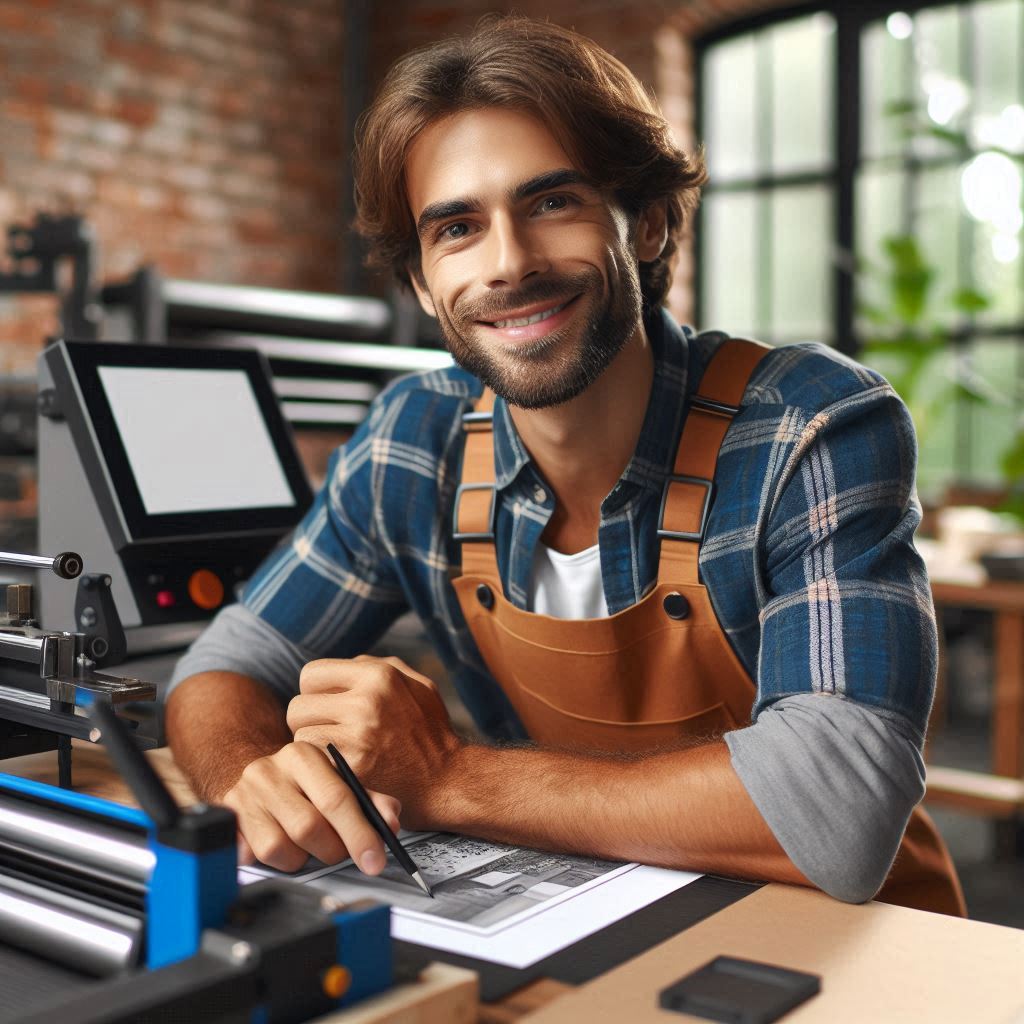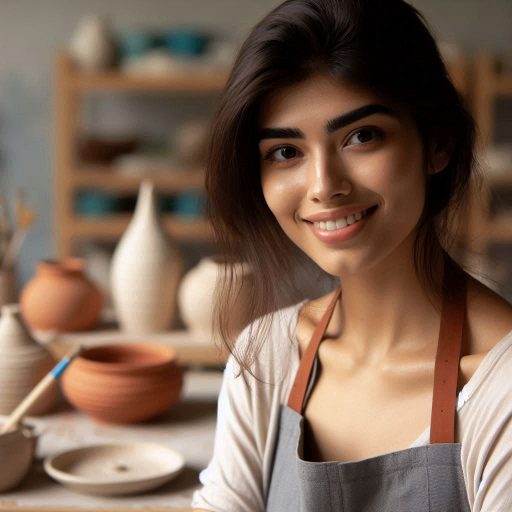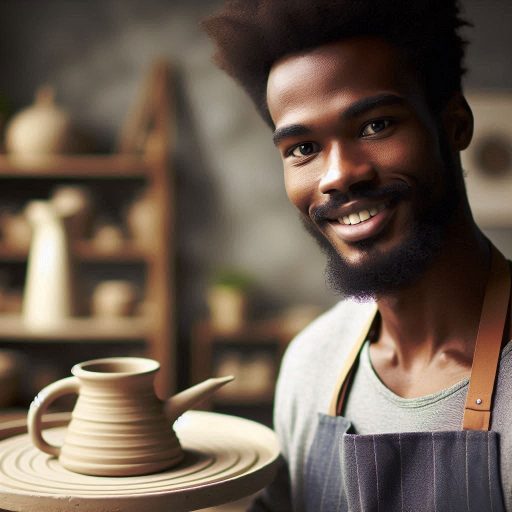Introduction
Abstract printmaking is an art form that diverges from traditional representation.
It focuses on shapes, colors, and textures rather than realistic depictions.
This approach encourages artists to explore their creativity without the constraints of realism.
Abstract printmaking often employs various methods to create unique visual experiences.
Artists experiment with form, composition, and medium, resulting in innovative and diverse outcomes.
Exploring different techniques in printmaking is crucial for several reasons.
Firstly, it expands an artist’s creative repertoire.
By experimenting with multiple methods, artists discover new ways to express their ideas.
Each technique offers distinct possibilities and challenges.
This experimentation can lead to breakthroughs in style and expression.
Secondly, understanding various techniques enhances technical skills.
Each printmaking method has its own set of rules and processes.
Mastery of these methods can significantly improve an artist’s overall proficiency.
Knowledge of different techniques also allows artists to combine methods for unique effects.
Furthermore, exploring diverse techniques can help artists find their distinctive voice.
Printmaking techniques, such as monotype, etching, and relief printing, each offer different textures and effects.
By understanding these, artists can better select the techniques that align with their creative vision.
This exploration not only enriches their work but also adds depth to their artistic practice.
In fact, abstract printmaking invites creativity and innovation.
By exploring various techniques, artists expand their skills and find new avenues for expression.
Transform Your Career Today
Unlock a personalized career strategy that drives real results. Get tailored advice and a roadmap designed just for you.
Start NowThe continuous exploration of different methods is essential for growth and originality in printmaking.
Overview of Abstract Printmaking Techniques
Printmaking is a versatile and expressive art form that allows artists to create stunning visuals through various techniques.
Abstract printmaking techniques offer artists the freedom to explore creativity and experiment with unique methods.
Here, we delve into some of the most popular abstract printmaking techniques:
Block Printing
Block printing is a traditional form of printmaking where a relief surface is carved to create a design.
The carved block is then inked and pressed onto paper to transfer the design.
This technique allows artists to create bold and graphic images with a handmade touch.
Monoprinting
Monoprinting is a printmaking technique that produces unique, one-of-a-kind prints.
It involves creating a design on a smooth surface, such as glass or a plate, and transferring it onto paper.
Each print is different, making monoprinting an ideal technique for artists who enjoy spontaneity and experimentation.
Stencil Printing
Stencil printing is a technique where a design is cut out of a stencil, allowing artists to create precise and detailed prints.
The stencil is placed on the paper, and ink is applied over the stencil to transfer the design.
Stencil printing is popular for its ability to produce intricate patterns and layered designs.
Collagraphy
Collagraphy is a versatile printmaking technique that involves creating a collage on a plate, typically made of cardboard or other textured materials.
The plate is then inked and pressed onto paper to create a print.
Collagraphy allows artists to experiment with texture and layering, resulting in rich and tactile prints.
In fact, abstract printmaking techniques offer artists a wide range of methods to explore and experiment with.
Whether you prefer the boldness of block printing, the uniqueness of monoprinting, the precision of stencil printing, or the textural quality of collagraphy, there is a technique for every artistic vision.
Dive into the world of abstract printmaking and unleash your creativity today!
Read: Common Mistakes to Avoid in Printmaking
Block Printing
Block printing is a timeless art form that transforms simple materials into striking visual art.
The process begins with carving a design into a block, typically made of wood, linoleum, or rubber.
The artist applies ink to the block’s surface, then presses it onto paper or fabric, transferring the design.
This technique allows for the creation of multiple prints from a single block.
Tools and Materials Needed
Essential tools for block printing include the block itself, carving tools, and ink.
Woodblocks and linoleum are popular choices, each offering different textures and effects.
Carving tools, such as gouges and knives, help shape the design.
A brayer or roller is used to evenly apply ink to the block.
Paper or fabric serves as the canvas for the printed design.
A press or a simple hand application can be used to transfer the inked block onto the chosen medium.
Examples of Famous Block Print Artists
Several renowned artists have made significant contributions to block printing.
Katsushika Hokusai, a Japanese ukiyo-e artist, is famous for his detailed and vivid woodblock prints, such as “The Great Wave off Kanagawa.”
In the realm of modern art, M.C. Escher is well-known for his intricate and mathematically inspired block prints.
Another influential figure is the British artist Edward Bawden, celebrated for his bold and graphic block-printed designs.
Each artist’s unique approach and style showcase the versatility and enduring appeal of block printing.
Block printing remains a cherished technique, celebrated for its ability to produce both intricate and bold designs.
With a few essential tools and materials, artists can create unique and impactful artwork that continues to inspire and captivate audiences.
Read: The Role of Technology in Ceramic Art

Monoprinting
Monoprinting is a unique printmaking technique where each print is a one-of-a-kind image.
Unlike other print methods, monoprints are not reproducible.
Artists apply ink or paint to a plate, then transfer the image to paper.
This technique allows for spontaneous and experimental artwork.
It combines the freedom of painting with the precision of printmaking.
Monoprints can vary greatly, making each piece an original work of art.
Steps to Create a Monoprint
- Prepare Your Materials: Gather a non-porous plate, ink or paint, and paper.
Ensure all materials are clean and dry. - Apply Ink: Spread ink or paint evenly onto the plate.
You can use rollers, brushes, or even fingers for application. - Create Your Design: Manipulate the ink on the plate to form your design.
Use tools or textures to add detail and depth. - Transfer the Image: Place your paper onto the inked plate.
Apply pressure using a press or your hands to transfer the image. - Reveal the Print: Carefully peel off the paper to reveal the monoprint.
The result will be a unique, one-of-a-kind artwork. - Clean Up: Wash your plate and tools immediately to prevent the ink from drying and to prepare for future prints.
Benefits of Monoprinting in Abstract Art
Monoprinting offers numerous advantages for abstract artists.
It encourages experimentation and creativity, as each print is unique.
Artists can explore various textures and colors without worrying about replication.
This technique fosters spontaneity, leading to unexpected and exciting results.
Monoprinting also allows for easy integration of other mediums and techniques.
It helps artists break free from traditional methods, making it ideal for creating dynamic and original abstract pieces.
Read: Ceramic Art for Beginners: Getting Started
Stencil Printing
Stencil printing is a versatile technique in abstract printmaking.
It involves creating images by applying ink through cut-out stencils.
This method allows for precise control over shapes and patterns, making it ideal for abstract art.
Stencil printing uses a stencil—a template with cut-out shapes—to transfer ink onto a surface.
The stencil blocks ink from reaching certain areas, creating a design where the ink only appears through the open spaces.
This technique offers clean lines and sharp edges, which are perfect for bold and graphic abstract compositions.
Different Types of Stencils Used
Various stencils can be used in this technique.
Traditional stencils are made from materials like paper, plastic, or metal.
Each material has its benefits. Paper stencils are easy to create but less durable.
Plastic stencils are more resilient and can be reused multiple times.
Metal stencils provide the highest durability and are ideal for intricate designs.
Additionally, artists can use adhesive stencils or DIY options made from household items, expanding creative possibilities.
Creative Possibilities with Stencil Printing
Stencil printing offers endless creative possibilities.
Artists can layer multiple stencils to build complex, multi-dimensional designs.
By varying the ink colors and layering techniques, they can create rich textures and dynamic visuals.
Stencils can also be manipulated—bent, folded, or combined—to produce unique effects.
Using different surfaces, like fabric or textured paper, can further enhance the print’s visual impact.
This technique encourages experimentation and innovation, making it a favorite for abstract artists seeking to explore new dimensions in their work.
Stencil printing is a powerful tool for abstract printmaking.
It combines simplicity with creative flexibility, allowing artists to produce striking and original prints.
Whether using traditional or experimental stencils, the technique offers a gateway to endless artistic exploration.
Read: Printmaking Techniques: Screen Printing Basics
Collagraphy
Collagraphy Technique
It is a printmaking technique where you build up textures on a plate.
Artists create the plate by applying various materials.
These materials can include paper, fabric, or textured paste.
Once the plate is prepared, ink is applied to it.
The plate is then pressed onto paper using a printing press.
The result is a print that captures the textures and layers from the plate.
Collagraphy allows for a wide range of textures and effects, making each print unique.
Materials Needed for Collagraphy
To start collagraphy, you need a few essential materials.
First, a sturdy plate, usually made from cardboard or wood, serves as your base.
Next, you need adhesive materials like glue or gel medium to attach textures.
You’ll also need various texture materials, such as fabric scraps, sandpaper, or textured papers.
Printing ink is crucial for transferring the texture from the plate to the paper.
Finally, a printing press or a roller is necessary to apply pressure and transfer the ink.
Make sure to have high-quality printmaking paper to achieve the best results.
Examples of Collagraphy Prints
Collagraphy prints can range from abstract to representational.
For instance, an abstract collagraph might feature bold, textured patterns that play with light and shadow.
A representational collagraph could depict a landscape, where the texture adds depth and dimension to the scene.
Artists might use collagraphy to explore themes of natural forms, urban textures, or imaginative designs.
Each print reflects the unique texture of the plate, creating a tactile quality that can be both visually and physically engaging.
The possibilities are endless, showcasing the versatility of collagraphy in printmaking.
Experimenting with Combining Techniques
Benefits of Combining Different Printmaking Techniques
Combining printmaking techniques can yield extraordinary results.
Artists blend textures, colors, and effects to produce unique prints.
This approach enhances creativity and originality.
By merging methods, artists can overcome limitations inherent in single techniques.
The fusion of techniques often leads to surprising and novel outcomes.
For instance, combining relief printing with monotype can create dynamic textures and rich color variations.
This experimentation fosters innovation and broadens artistic possibilities.
Each technique can complement and enhance the others, resulting in intricate and layered prints.
The synthesis of methods not only diversifies the artistic process but also enriches the final artwork.
Tips for Creating Unique and Innovative Prints
To create unique prints, start by exploring various techniques.
Test how they interact with each other.
Layering techniques can produce intriguing visual effects.
For instance, apply a monotype layer over a linocut to add depth and complexity.
Experiment with different inks and papers to see how they influence the outcome.
Be open to trial and error; unexpected results can lead to groundbreaking discoveries.
Document your process to track successful combinations.
Don’t hesitate to mix traditional techniques with modern approaches for fresh perspectives.
Embrace the creative journey, and let your experimentation guide you to new artistic horizons.
Examples of Artists Who Have Successfully Combined Techniques
Many artists have achieved success by combining printmaking techniques.
Helen Frankenthaler, for example, used monotype and woodcut to explore color and form.
Her work demonstrates the potential of merging different methods to achieve new visual effects.
Another notable artist, Kiki Smith, blends etching with relief printing to create richly textured and layered prints.
Her innovative approach highlights the power of technique fusion in printmaking.
Additionally, Richard Serra’s use of etching combined with aquatint offers bold, dynamic results.
These artists exemplify how combining techniques can push the boundaries of traditional printmaking and produce compelling, original artwork.
Conclusion
Abstract printmaking techniques offer a unique and creative way to express ideas and emotions.
By exploring these techniques, artists can push the boundaries of traditional printmaking to create innovative and compelling works of art.
Experimenting with abstract printmaking allows artists to break free from the constraints of realism and explore new ways of interpreting the world around them.
It encourages a sense of freedom and creativity that can lead to unexpected and exciting results.
Through abstract printmaking, artists can discover new textures, colors, and shapes that they may not have considered before.
This process of exploration can lead to a deeper understanding of their own artistic voice and style.
I encourage all artists, whether experienced or beginners, to experiment with abstract printmaking techniques.
Don’t be afraid to push the boundaries and try new things – you never know what amazing creations you might come up with!
Remember that art is about exploration and self-expression.
By pushing yourself out of your comfort zone and trying new techniques, you can grow as an artist and create work that is truly unique and meaningful.
So, go ahead – grab your tools, start printing, and see where your creative journey takes you!




